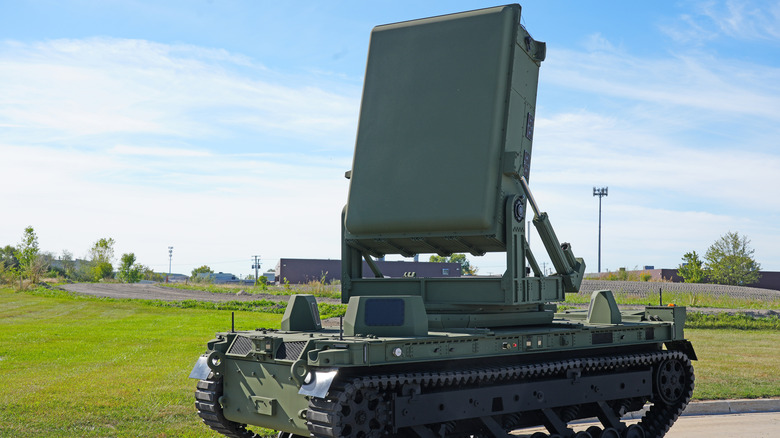This 10-Ton High-Pulse Microwave Robot Fries Drone Swarms In Seconds
Autonomous tanks (including the green-eyed machines being tested by DARPA) and unmanned drones have become the order of the day in modern warfare. Without the need for pilots aboard, rocket-powered drones can soar through the skies at nearly Mach 1, and massive swarms of military drones can be deployed simultaneously, overwhelming foes with sheer numbers. In response to these autonomous vehicles, new kinds of weapons have manifested, such as the Leonidas Autonomous Robotic – or Leonidas AR, for short — a U.S.-made autonomous weapon that cooks drones with bursts of microwaves.
Anti-drone weaponry has become a major subset of military development, with specialized weapons seeking to target a drone's weak points rather than fight them like manned aircraft. The Leonidas AR is such a weapon developed by Epirus and General Dynamics Land Systems. Instead of wasting bullets and explosives to knock enemy drones out of the sky, this weapon is designed to precision-target their vulnerable internal circuitry, instantly knocking them out and rendering them inoperable.
The Leonidas AR's microwaves can precision-target large swaths of unmanned aircraft
The Leonidas AR is made up of two major components produced by its parent companies. From General Dynamics Land Systems, we have the Tracked Robot 10-Ton (TRX), an exceptionally hefty autonomous vehicle made to roll around unstable terrain on equally hefty tank treads. That vehicle is equipped with the titular Leonidas weapon developed by Epirus, a high-powered microwave weapon. That's essentially the same kind of energy produced by the microwave in your kitchen, but both exponentially more powerful and highly focused in one direction.
In a nutshell, the Leonidas AR takes aim at incoming unmanned vehicles and aircraft and fires off an invisible pulse of powerful, high-pulse microwave energy. The microwaves don't affect the targets externally, but instead target their sensitive internal circuitry, flash-frying them in an instant. As a drone can only be controlled remotely, without that circuitry, they're completely helpless and immediately become inoperable.
In a promo video posted on the Epirus YouTube channel, we can see a demonstration of the Leonidas' efficacy on a large swarm of remote drones in various shapes and sizes. The weapon fires completely silently, and in a single second, every single drone falls right out of the sky, completely disabled. Not only is this weapon extremely precise, it also helps to cut down on collateral damage from stray bullets and explosives, ensuring the weapon's operators and allies are safe on the battlefield. Operators of the weapon can also fine-tune its frequency and firing range to prevent any kind of interference with allied drones and weaponry, and with its 360-degree radar, it can detect most incoming threats and even target them autonomously if an operator isn't available.
